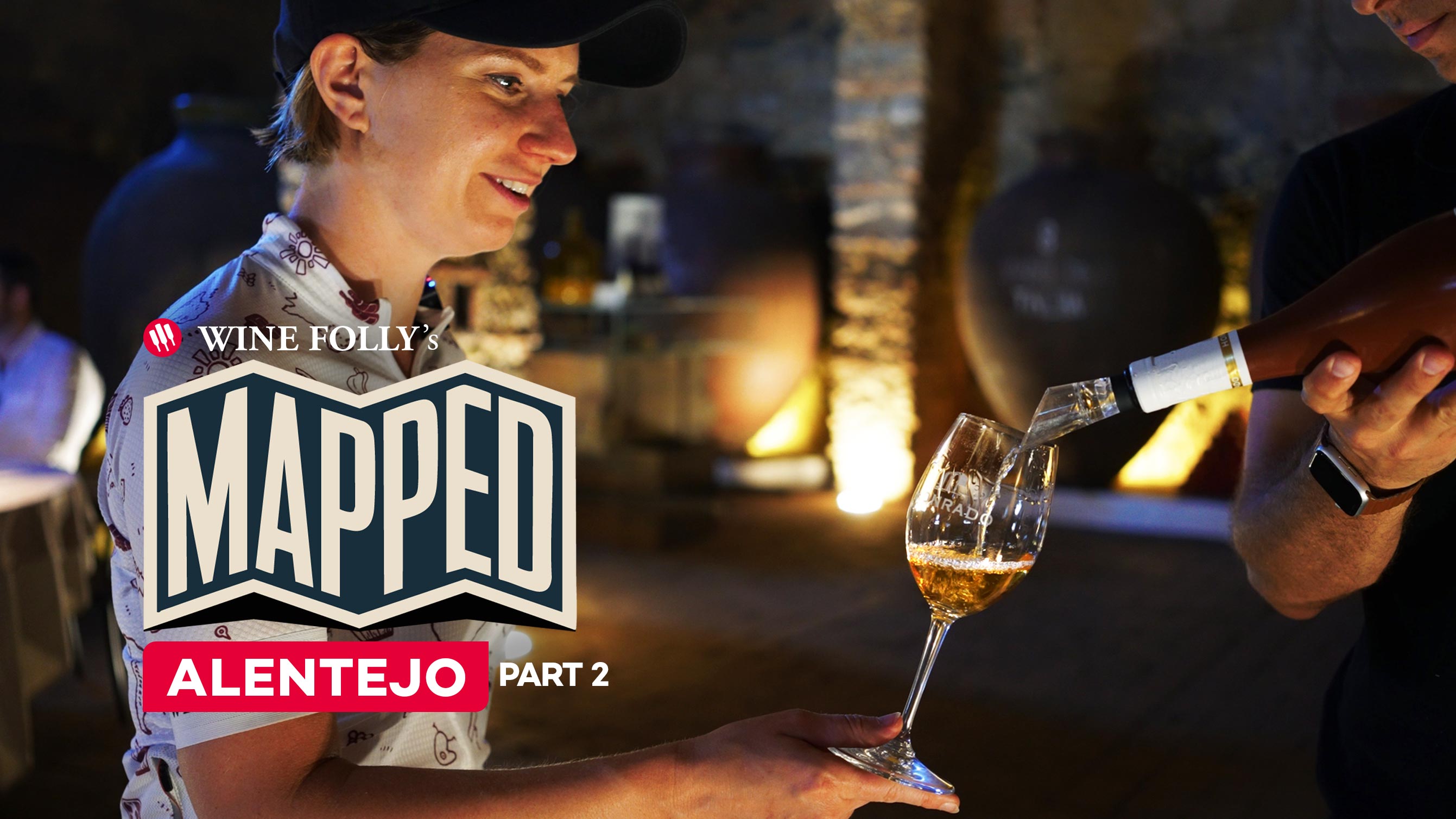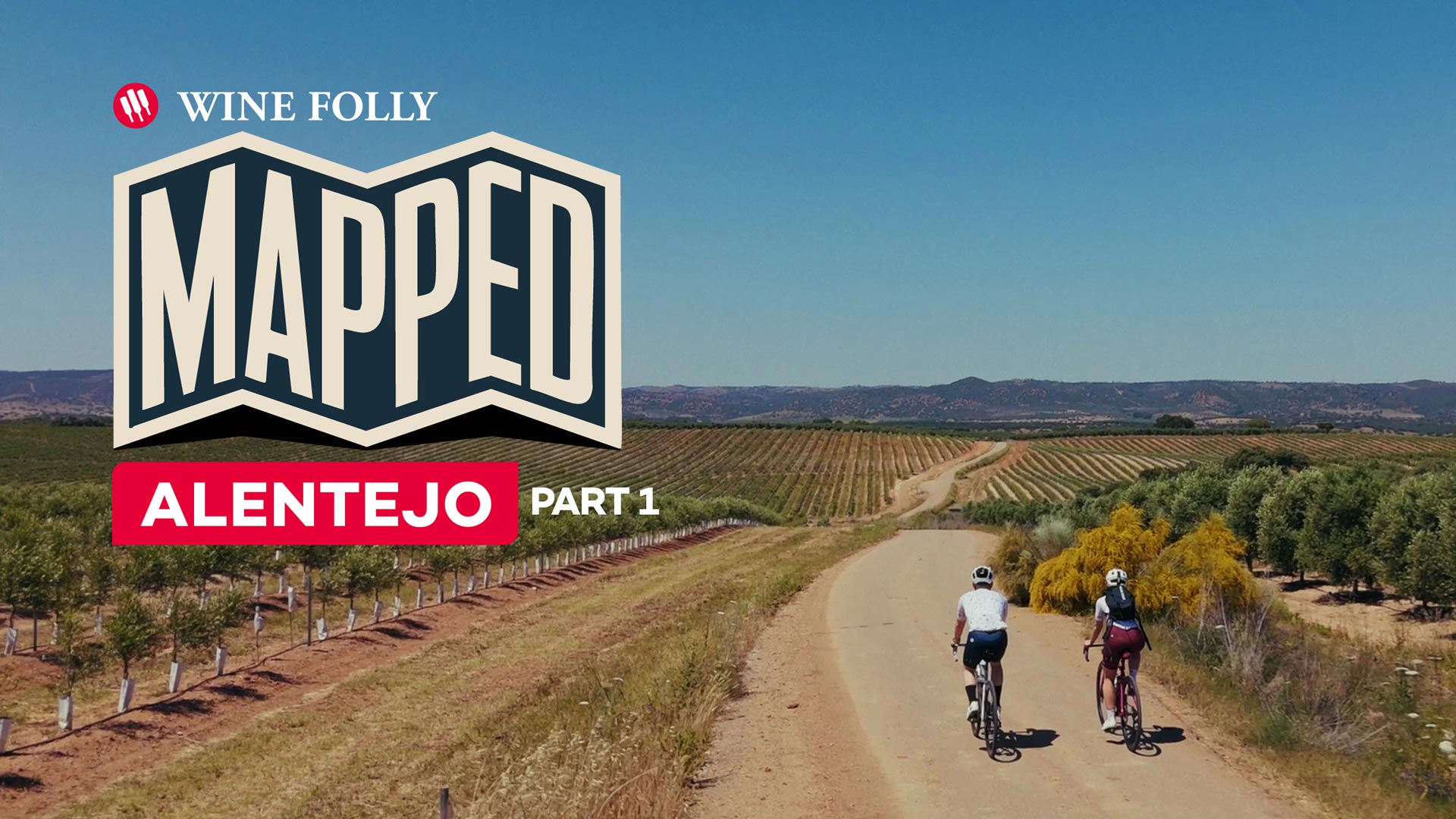Sweet Wines Aren't What You Think
Sweet wines often get a bad rap, but as it turns out, they’re some of the world’s most fascinating and collectible wines. From the high-acid, delicately sweet Rieslings of Germany to the rich, syrupy decadence of Pedro Ximénez, there’s a whole world of flavor ready for exploring.
In this video, we break down what makes these underappreciated wines are so special and why they deserve a place in your glass.
Prädikat Riesling (Spätlese): Germany’s Best-Kept Secret
Not all sweet wines are syrupy! One of Germany’s most prized styles, Spätlese Riesling, strikes the perfect balance between sweetness and acidity. Grown in the Mosel Valley, where Riesling reigns supreme, these wines result from grapes left on the vine a little longer to develop richer flavors.
With around 30–60 g/L of residual sugar, Spätlese Rieslings often taste more balanced than outright sweet, thanks to their naturally high acidity. Expect flavors of ripe peach, apricot, and lime, with a backbone of slatey minerality. These wines age exceptionally well — 20 to 30 years in a cellar is not uncommon — and offer an outstanding value compared to high-end Cabernet Sauvignon.
Why Try It? If you love complexity and vibrant fruit flavors with a crisp finish, this is a great introduction to sweet wines.
20-Year Tawny Port: Portugal’s Liquid Legacy
Before dry wines took over fine dining menus, sweet wines were the pinnacle of luxury. One of the oldest examples? Port wine, specifically Tawny Port, aged for decades in oak barrels to develop deep, nutty complexity.
Produced in Portugal’s Douro Valley, this fortified wine is made from a blend of native grapes like Touriga Nacional and Touriga Franca. Brandy is added during fermentation, halting the process and preserving the grape’s natural sugars. Over 20 years in oak, the wine oxidizes, creating flavors of dried fruits, hazelnuts, caramel, and orange peel, with a silky-smooth texture.
At around 100–130 g/L of residual sugar, Tawny Port is indulgent yet balanced, offering an aged-wine experience at a fraction of the cost of other collectibles.
Why Try It? If you enjoy whiskey or aged spirits, you’ll love the deep, nutty complexity of a well-aged Tawny.
Moscato d’Asti: Italy’s Most Popular Sweet Wine
Everyone talks about Barolo when discussing Piedmont, but Moscato is the region’s true champion in terms of plantings and popularity. Moscato d’Asti, a lightly sparkling (frizzante) wine, is known for its fragrant aromatics and low alcohol (around 5.5%).
Made from Moscato Bianco grapes, this wine delivers flavors of fresh peach, mandarin orange, honeysuckle, and citrus blossom. Despite having 80–150 g/L of residual sugar, the effervescence and bright acidity make it feel refreshing rather than heavy.
Why Try It? It’s the perfect first step for those who claim they don’t like wine. Plus, at around $20, it’s an affordable indulgence.
Sauternes: The Magic of Noble Rot
Mold on grapes? Sounds terrifying — until you taste Sauternes. This French dessert wine from Bordeaux depends on a special fungus called Botrytis cinerea (or “noble rot”), which shrivels the grapes and concentrates their sugars and flavors.
Made primarily from Sémillon and Sauvignon Blanc, Sauternes wines offer intense notes of honey, apricot, and butterscotch. With 120–190 g/L of residual sugar, they are incredibly sweet but still maintain balance through a subtle bitter edge from the noble rot process.
Aged for decades, Sauternes offers collectors a unique, long-lived wine with unmatched complexity.
Why Try It? If you love rich, golden-hued wines with layers of complexity, Sauternes will blow your mind.
Vin Santo: Tuscany’s Time-Honored Tradition
Think wine takes a long time to make? Vin Santo’s fermentation can last up to five years! This Italian dessert wine, made from dried Malvasia and Trebbiano grapes, follows the ancient “passito” method, where grapes are left to dry before fermentation, concentrating their sugars.
After fermentation, Vin Santo is aged in small barrels called caratelli, allowing flavors of honey, dried fruit, vanilla, and almond to develop. With around 270 g/L of residual sugar, it’s a lusciously sweet, amber-hued wine that pairs beautifully with biscotti.
Why Try It? For a taste of tradition with an unmatchable depth of flavor, Vin Santo is a must-try.
Rutherglen Muscat: Australia’s Sweet Powerhouse
Think fortified wines are all about Port? Think again. Rutherglen, Australia, is home to one of the most distinctive sweet wines in the world: Rutherglen Muscat. Made from Muscat à Petits Grains Rouge, this wine undergoes an extensive aging process, developing bold, caramelized flavors.
Boasting 200–400 g/L of residual sugar, this is one of the sweetest wines on the planet. But thanks to its fresh acidity and complex aging process, it remains balanced. With flavors of rose petals, dried apricots, and raisins, it’s a powerhouse of rich, concentrated sweetness.
Why Try It? If you love dessert wines that pack a punch, Rutherglen Muscat is a must-have experience.
Pedro Ximénez: Spain’s ‘Black Gold’
And now for the grand finale — Pedro Ximénez (PX) from Spain’s Montilla-Moriles region. Known as the richest and sweetest wine style in Spain, PX clocks in at an eye-popping 400 g/L of residual sugar. That’s nearly syrup territory!
Made from sun-dried grapes, PX wines develop intense flavors of molasses, figs, and coffee. Traditionally used as a sweetener in sherry blends, on its own, it’s a dessert in a glass.
Why Try It? If you love deep, dark, and rich flavors (think caramelized sugar and dried fruit), this is your ultimate indulgence.
Sweet Wines: A World of Flavor
Sweet wines are anything but simple. They span an incredible range of styles, from delicate and refreshing to rich and luxurious. Exploring the crisp balance of a Spätlese Riesling or diving into the intense, syrupy depths of PX can reveal flavors you never expected.
Wines Mentioned

Château Suduiraut
2019 Château Suduiraut Premier Cru Classé 1855
Sauternes | Gironde
Château Suduiraut, classed as a Premier Cru in 1855, is made from grapes selected from the finest terroirs of the property.
This wine is handcrafted at every stage of its elaboration and reveals a remarkable complexity and a golden colour reminiscent of the sun. With age the bright gold evolves into a dark amber colour. With an extensive life-span, it powerfully and harmoniously combines fruit and floral aromas with roasted and candied notes.

All Saints Estate
Rutherglen Muscat
Rutherglen | Victoria
Muscat is one of the great treasures of the fortified wine world and the young wines have a terrific vibrancy and aromatic lift.
Irresistible flavours of butterscotch, raisin and treacle.

Quinta do Vallado
20 Years Old Tawny Port
Portugal
Round, unctuous and liquorish with lots of freshness.

Fèlsina
2017 Vin Santo del Chianti Classico
Vin Santo del Chianti Classico | Toscana
A wine from partially-dried Malvasia, Trebbiano, and Sangiovese grapes harvested in the Chianti Classico denomination. The ancient tradition of “Vin Santo di Fèlsina” is embodied in the passage of the “mother” (the thick substance remaining from previous vintages) from the previous year’s casks to the next. The process has been modernized through careful grape selection, attention to the drying process, by adding the Sangiovese varietal to characterize Fèlsina’s signature style, as well as by meticulous care in vinification and ageing.
Consistency on the palate, softness and elegance nicely structured by the oak barrels. Wine with great balance, favorable acidity and a well-harmonized residual sugar. Long in the mouth.

Paolo Saracco
2023 Moscato d'Asti
Moscato d’Asti | Piemonte
Moscato d'Asti is an indigenous aromatic wine characterised by orange, peach and lime notes, with a sweet taste rich in minerals.
Intense, elegant and lingering. The sweet sensations are well balanced with a pleasant acidity and fruity aromas typical of Muscat grapes.

Fritz Haag
2023 Brauneberger Juffer Sonnenuhr Riesling Spätlese
Mosel | Germany
The Juffer Sonnenuhr Spätlese always keeps what its name promises.
The Sonnenuhr Spätlese appears clearly warmer in its structure and sensory properties. uicy body, mature playful exoticism.

Bodegas Alvear
Pedro Ximenez Solera 1927
Montilla-Moriles | Spain
Sweet wine made from sun-dried grapes, with subsequent ageing in American oak barrels, using the “criaderas and soleras” system for more than six years.
Elegant, broad and sweet. The notes anticipated by its aroma appear, with hints of roasted coffee, chocolate and raisins. Very long.
Related Videos

The Clay Revolution in Alentejo

Guide to Texas Hill Country Wine
